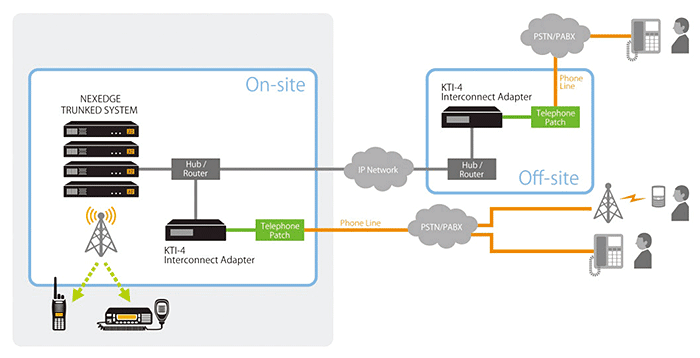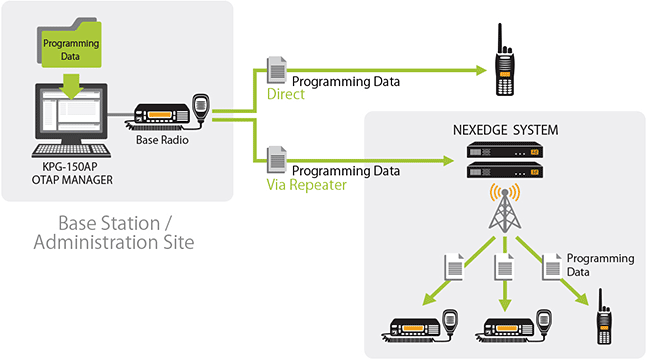Flexibility
NEXEDGE® supports both NXDN™ digital and analog modes via a common radio technology, which creates a self-paced migration path to accommodate budgetary, administrative, organization and time-line demands.
Conventional Mixed Mode
NEXEDGE® extends the life of current radio system assets. Capable of both conventional analog and digital operation, NEXEDGE® radios can talk to both old and new radios. Current analog and NXDN™ digital fleets can share the same frequency in conventional Mixed Mode, providing uninterrupted service as long as needed and a straightforward migration path as aging analog fleets are replaced with digital.
Mixed Mode operation is available in base, repeat and direct modes in the following bandwidth combinations: 25, 20* or 12.5 kHz analog with 12.5 or 6.25 kHz NXDN™ (25 kHz mode capable equipment is only available where permitted by government regulation).
Additionally, all NXDN™ digital modes use the same Class-C power amplifiers and site management equipment used for current analog stations, ensuring high ROI and a wide range of supplier choices.
- * Europe only
Trunked Channel Shared Mode
NEXEDGE® trunked system traffic channels can be shared with existing external analog conventional or analog trunked logic controllers, extending service to analog fleets as they transition to NXDN™ trunking.
Telephone Interconnect System
Connected to a NEXEDGE® trunked system, the KTI-4 Telephone Interconnect Adapter converts analog voice to/from digital, enabling two-way communication between a telephone and a radio. It connects to an analog PABX/PSTN system through analog telephone patch equipment such as the Zetron Model 735 and Zetron Model 30 (availability varies by region).

OAA: Over-the-Air-Alias
A calling unit’s User ID (UID) alphanumeric alias is sent over the air and displayed on the receiving unit’s LCD, so there is no need to program every fleet alias in every radio.
OTAP: Over-The-Air Programming
The NEXEDGE® OTAP Manager software (KPG-150AP) provides wireless programming for subscriber units in the field. Over-the-air programming results in huge savings for large fleets, which previously incurred considerable travel, labor and fuel costs, as well as suffering lost productivity from radio downtime.
